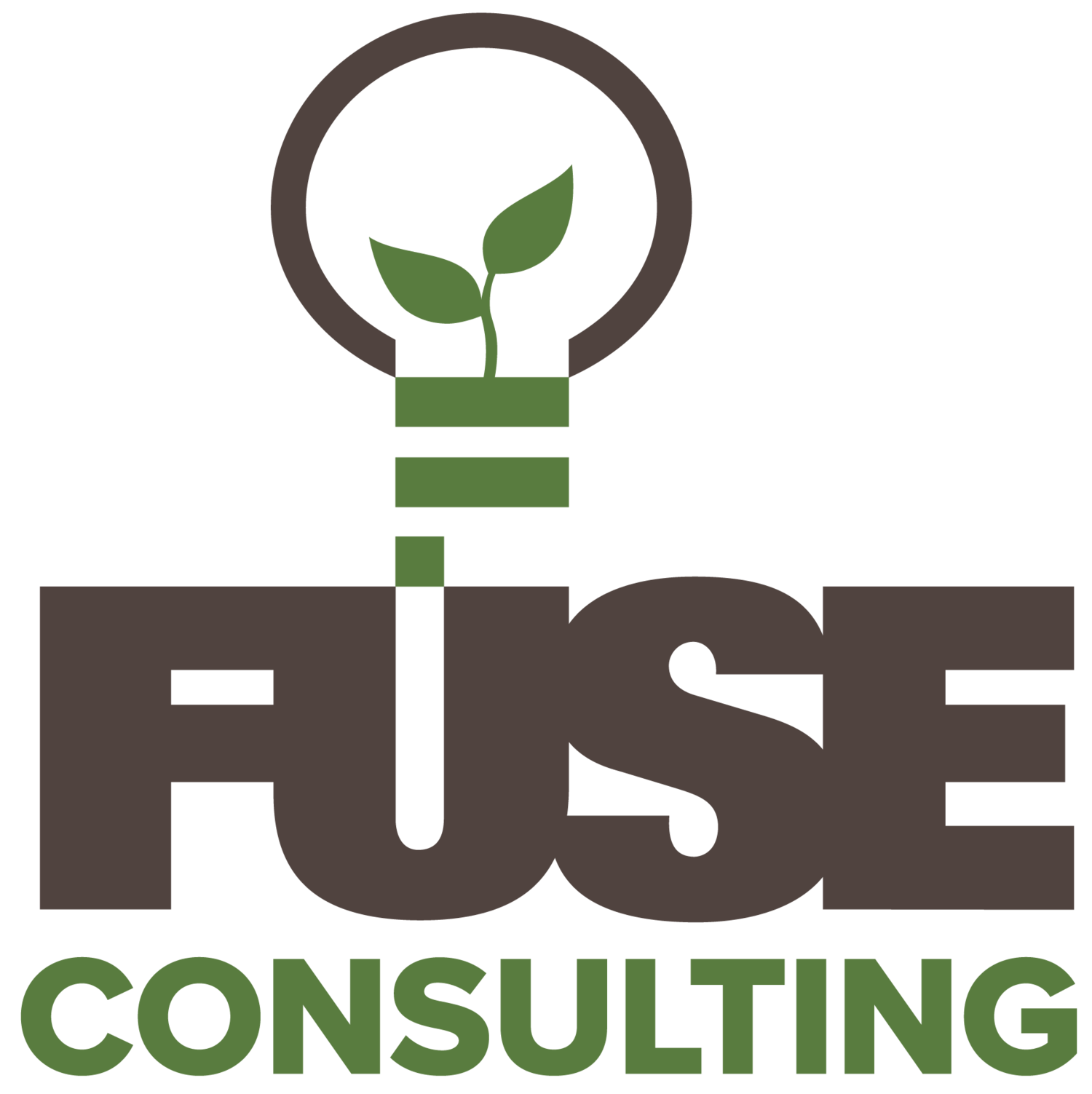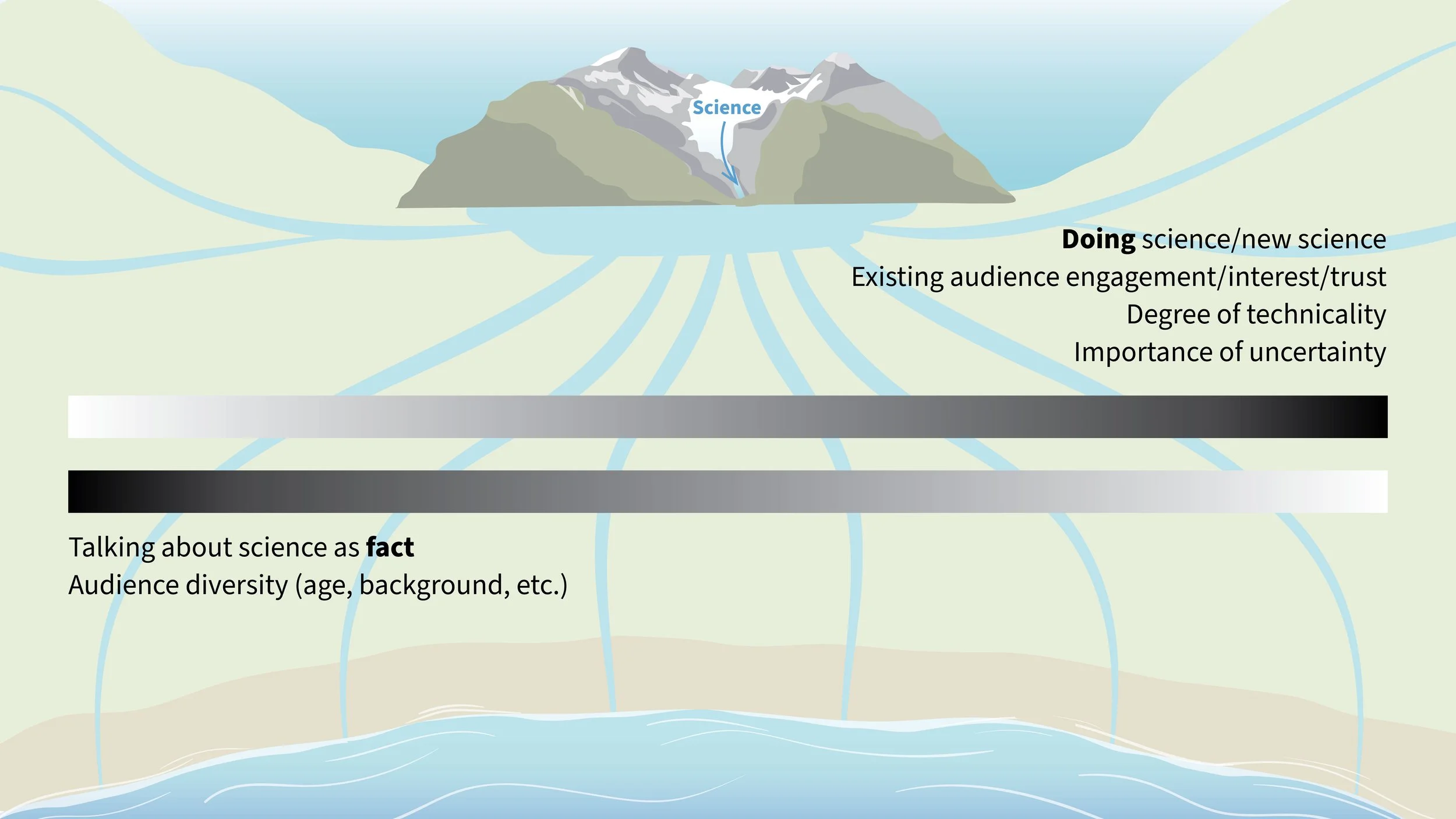Science Communication as a Spectrum with Different Streams
Author: Shelagh Pyper
When I transitioned from a more common role as a STEM outreach program director to a consultant working with industry and government, I wondered if I still belonged in the sci comm community. I didn’t yet see our new work in active research and field trials and industry collaboration as part of the field of science communication the way I traditionally thought of it. Our new work still had an audience, but I was no longer on the demo stage or in front of a classroom, in fact, I was often one, two or even three steps removed from the audience.
Have you ever wondered if you belong in the science communication community?
We recently hosted a conversation at the Science and Technology Awareness Network conference about how diverse this sector of sci comm is, and how all of our work (while it serves different audiences and requires different techniques) intersects along a spectrum. As our company grew, we delineated four branches of our organization, one for each of the streams of science communication in which we work – Education & Outreach, Research Mobilization, Multi-stakeholder partnerships and Operational Innovation. There are many more streams along the spectrum of science communication, for example Mentorship and Science Journalism. But these four have started to crystallize in our work and have helped guide the structure of our team and the way we choose the tools and strategies we use. These streams have also been very helpful in communicating with our clients - some of whom have unfortunately been using the wrong strategies for their audience, or have been operating in the wrong stream entirely.
That’s probably when it feels like you're “paddling upstream”.
We aren’t at all suggesting that a science communicator needs to fit into one box, or choose one lane and stay in it - but it is very helpful to think about the work we do and develop concrete ways of sharing that with those outside and inside the industry. Even now, as ChatGPT, an artificial intelligence chatbot can research a topic and develop a summary of the knowledge available online in 10 seconds, it’s critical that we take a moment and reflect on what we do as science communicators and how we do it.
This is a visual analogy that we have found helpful. At the top of the graphic you’ll notice the Glacier of Science, that is feeding all the streams of our work. We use this analogy to help us stay focused when certain graphic design work drifts towards fine art, or industry requests sound like marketing. We also say that it’s important to once in a while “taste the water” and be sure nothing like green washing or bias has tainted the water of science so to speak.
In this version of the graphic we’ve added streams for Mentorship and Science Journalism, which are not branches at Fuse, but we know many science communication organizations and colleagues with unique tools and target audiences that we wanted to represent here as a way to start a discussion about what other streams might exist.
It’s also important to note that the delineation between these streams is pretty fuzzy, and there are times where projects span many streams depending on the exact product we’re working on and the exact target audience for that experience. In our next article, Sonya is going to delineate the way we think about the target audiences for these different streams and the unique tools for each branch as well as the principles that are common across all the science communication work we do.
Another important concept for us in this analogy is that other watercourses combine with the glacier of science. Our work is often informed by Indigenous Knowledge and is nearly always motivated by improving a practice in environmental education or sustainable land management. Our unique approach at Fuse is also inspired by Art. If you’ve been wondering what Fuse means, it’s not an acronym, it comes from the idea of fusing science and art, as well as fusing different knowledge systems and connecting different groups.
And where does all this inspired, motivated and informed science flow? Down to the sea where we Bring Knowledge to Life, usually with engaging visuals but also with in-person or virtual experiences, and by making complex concepts real and concrete for people.
As our company grew, we increased our capacity and specialty areas evolved – and that allowed me to start doing more work back in my familiar STEM outreach world, but also caused tension (good tension) about what “good science communication” looked like. We realized there was a whole spectrum of science – some very established science with a long shelf-life that we could treat as fact, and simplify for a general public audience, and some very new science, that wasn’t yet proven, but more in the process of being tested. On that end of the spectrum, we can’t cut out the explanation of how that scientific finding was produced – the methods – or avoid discussing the uncertainty and covariables. Doing so can reduce industry, government or public trust in science – if one week they read one finding, (eggs are good) and the next week “scientists” tell them the opposite (eggs are bad for you). Understanding that we need to explain scientific nuance and not overstretch findings has allowed us to build strong relationships with researchers.
Another difference in how each of us works with science is in considering the diversity of some audiences, like the general public and what diverse values, comfort level with science and accessibility barriers they have. Some topics are very foreign to a general public audience and so we start with relevant comparisons and find concrete examples. On the other end of the spectrum we’re synthesizing science in a specific area for practitioners that are engaged, interested and have trust in that applied science and so the tools we draw on are quite different.
As new diverse organizations found us, we stretched beyond our familiar clients and out into new sectors and new countries where the scope of our projects started to creep into policy work, or sometimes more layout than information design, and often a lot of standard communications work that didn’t fully intersect with our company value of influencing sustainable practices. Often clients come to us with a buzz word or trendy new product on their mind, when what they actually need is to better understand their audience and focus on the tools that fit their objective. That’s when this idea of delineating our work and getting better at speaking about the tactics and tools right for each audience has helped us coach our clients to success and produce effective science communication products.



